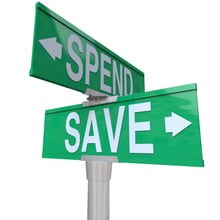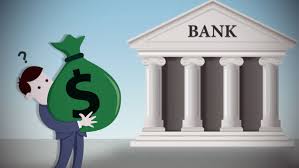Financial Arguments
While studying Financial Planning in college one math class referred to a mathematical formula as an argument, something I was not too familiar with. Not completely understanding the topic - the only argument I had was with the professor! Recently I was talking with a friend about personal financial topics, I asked her, “What money topic do you and your spouse argue about most?” Her response, “debt.” She wants to be debt free!
Debt - This husband and wife are the typical middle income American family: both spouses work, two kids, a suburban home, a couple of autos and maybe a pet or two. When debt becomes a real problem the heated argument rises from a simmering two, to at least a six or higher on a scale of one to ten. 
Why? Simply because he does not show any interest in caring about the family finances. He works and spends what he wants on snacks, tobacco, or other stuff at the gas station. He does not have a serious concern for the future; life is easy.
The problem became really serious when he began using his wife’s credit card for business travel and never turned in the expense report. He did not bother to collect expenses that were due him from his company. She offered to do the paperwork for him and it just did not seem to matter, it was still too much trouble. He has since been laid off and is employed with a new company, and those expenses are now theirs to bare and pay off.
Some people as the saying goes are “wired differently” or perhaps they have a short in their wiring. Either way people can always change, that I am confident of. Money issues are very emotional, thus solving those problems is emotional as well. We think through these financial issues and come up with solutions. Here are a few ideas if the above story sounds a bit like a situation you are familiar with.
First people have to want to change and typically they change because they see something better or what they are experiencing is so painful that they realize they must change. This change maybe in baby steps, but that is o.k. any positive change is good. If there are a few episodes of back-sliding, claim progress, be patient, and press forward with faith.
Next develop a vision of what could happen if small changes were made. Helping this person see a vision of what the short-term would look like if they made such small changes is most valuable. Set a goal, if we had an extra $1,000 we could go on a small vacation to (pick a place). Talk it up and get them excited about it. Then work on the plan to fund it.
 Maybe since both spouses work, the saver could offer to the spender a matching deal: you cut out $50 per week of excess spending and I will match the $50 towards the trip. The spender’s $50 can go on debt and the saver’s $50 can go towards the vacation.
Maybe since both spouses work, the saver could offer to the spender a matching deal: you cut out $50 per week of excess spending and I will match the $50 towards the trip. The spender’s $50 can go on debt and the saver’s $50 can go towards the vacation.
That is $200 per month each and in five months $1,000has been saved for the trip, and an extra $1000 of debt has been paid off. Next, establish a new vision, set a new goal, make a plan and repeat.
Help the spender understand that debt is a constant - it is something that we may live with all the time, it never sleeps or goes on vacation, and never seems to go away unless something is done about it. In today’s world there are people out there who simply love to spend, keeping them in debt, and they love the feeling of “power” or “entitlement” they have when they pull out the charge card.
That emotional feeling of power or entitlement can be transferred to a feeling of greater power and strength when there is money in the bank and you don’t have to pull out the charge card. True financial strength is not developed by having a great credit rating; it is developed by having the self-discipline to save money.
REMEMBER:
"Your failures are your stepping stones to success" ~Howard Ruff


 Becoming debt free should be a goal of each person. I have seen young college graduates who have finished school with well over $200,000 in student loans. As one client was telling me it is “discouraging”. The bondage of debt is discouraging! And what do many young graduates do - load up more debt and buy a new automobile! This debt can be extremely onerous! Read more about auto
Becoming debt free should be a goal of each person. I have seen young college graduates who have finished school with well over $200,000 in student loans. As one client was telling me it is “discouraging”. The bondage of debt is discouraging! And what do many young graduates do - load up more debt and buy a new automobile! This debt can be extremely onerous! Read more about auto 


